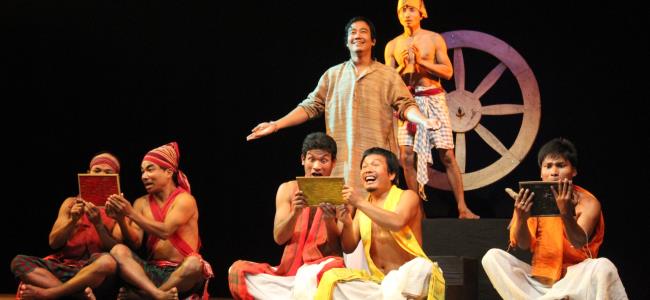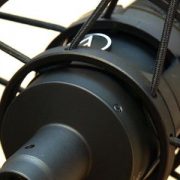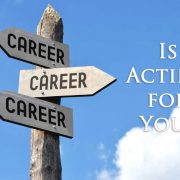Observation — one of the most common words used during acting training. “Observe, observe, observe,” stresses your drama school teacher on a daily basis; and while it seems as if the importance of these kinds of acting exercises has been underlined enough already — it hasn’t, and maybe never will be. Life is theatre, and best actors are those who learn how valuable this great — yet so simple — process is for their acting arsenal.
It’s difficult not to quote Meryl Streep’s words at this point, as this is what this article is going to be based on:
“Acting is not about being someone different. It’s finding the similarity in what is apparently different, then finding myself in there.” – Meryl Streep
Acting Exercises Using Observation
While observation is such a powerful tool for an actor, surprisingly, these acting exercises are also extremely easy and enjoyable. There is no requirement for any rehearsal space, equipment or scene partners. In order to observe, an actor needs to get to a place filled with people, sit or stand, and watch them (preferably without being noticed, otherwise it may raise some serious suspicion). People watching is an activity that is being practice by all the greats out there, often without even them being aware that they do it.
Young actors training in acting schools will have classes and acting exercises where all they have to do is leave the building and go people watching to any place nearby. I have to be honest — those used to be my favorite ones of all. So called acting cities like London, New York and Los Angeles are meccas for unique personalities and interesting human beings all over.
So where can one go to practice? Anywhere! Park, mall, pubs and restaurants, busy streets, stadiums, shops… You don’t even have to plan anything ahead, just use the opportunity when it arises. When you’re on a bus in the morning, observe. When standing in the queue for coffee, observe. When having lunch in a cozy cafe, pay attention to how people behave, how they react to different kinds of situations, and what are they like.
Observation Acting Exercises: Part I
When you’re at the place, begin your observation acting exercises.
Pick one person out of the crowd and focus on them. Give him/her a name. Let’s say for the purpose of this article, she’s Josephine. How old is she? What does she look like? What kind of personality do you think she has? What makes her stand out from the rest in the cafe? Why did you pick her? What do you think she’s thinking at this very moment and why? Any specific actions on her part? This is the time to do as much observation as you can.
Observation Acting Exercises: Part II
Observation is a game, and a very fun one. The more you get involved, the more you enjoy it.
After the initial analysis, start digging deeper. Use your imagination to make up a life story for Josephine. Why is she sitting in that cafe today? Could she possibly be waiting for a date? Or maybe she’s just been on one and now having coffee on her own to think about the guy? Through the magic of mind, start building a story for the person you have picked out (and you don’t necessarily need to stare at them this whole time, it will get you into trouble).
What does Josephine do for a living? Does she have a family, and do they live together? Maybe they wanted to live with her, but she’s more of a small, cozy apartment girl, and prefers to live alone in the city center instead. Does she have a dog or a cat? Maybe both. What are their names? Where do you think she’s going after she finishes her cup of coffee? Is there some kind of problem she needs to solve? What is it? Maybe it has something to do with that stain on her white blouse?
It’s easy to let your creativity explode and write a whole book on a single person; always build upon and have a reason based on what is reflected in your opponent. Do not make up random things. Try to be as detailed as you possibly can, and remember that she — or even you — can’t sit in that cafe for two days straight. You’re on the clock here.
Think of it as a book or a screenplay, and choose a genre: are you going to make it a drama, comedy, or maybe even a thriller? Go in the direction you have decided, and most importantly, stay with it.
Observation Acting Exercises: Part III
When your screenplay is lined out in your head, or the person has left the cafe hours ago and you’re still sitting there playing with your imagination, it’s time to go home and brainstorm a little. Take a play, a film script, a book — anything, and pick a random character out of there. Then, try to cast Josephine as that character you have chosen. This is a good time to remember Meryl Streep’s words from the beginning of this article — make a connection between Josephine and the character.
Play the scene in your head from Josephine’s perspective. The more difference there is between the character in the artistic work you’re reading and the person you saw in the cafe, the more fun you’re going to have. Always keep every minor detail you’ve noticed about the person in the cafe, and write those into the scene. Work it, play around and make it feel natural; cast Josephine for that part. The end result should feel as if Josephine had to be part of that play/novel/script all along.
You can always find more ways to play with these types of acting exercises. Observation is an amazing tool that actors can never survive without. Things like these will train your imagination and return fresh, new, unseen and interesting results and characters that you can later use in your acting work. Always try your best to put them aside somewhere in your mental closet — you might just need your Josephine someday.
 To receive more advice on acting business and craft from the acting community, please subscribe to our newsletter and join us on Facebook, Google+ and Twitter.
To receive more advice on acting business and craft from the acting community, please subscribe to our newsletter and join us on Facebook, Google+ and Twitter.





